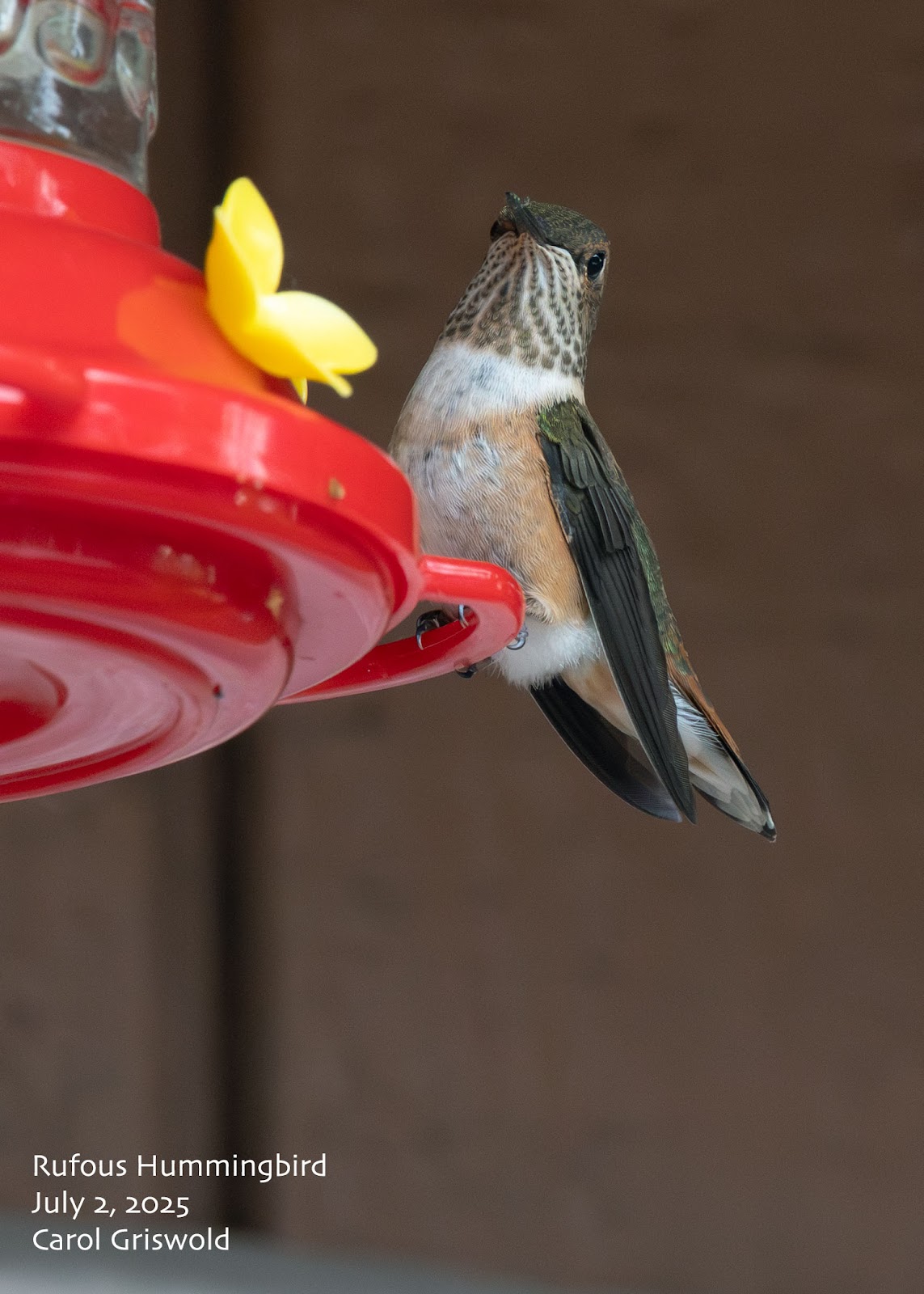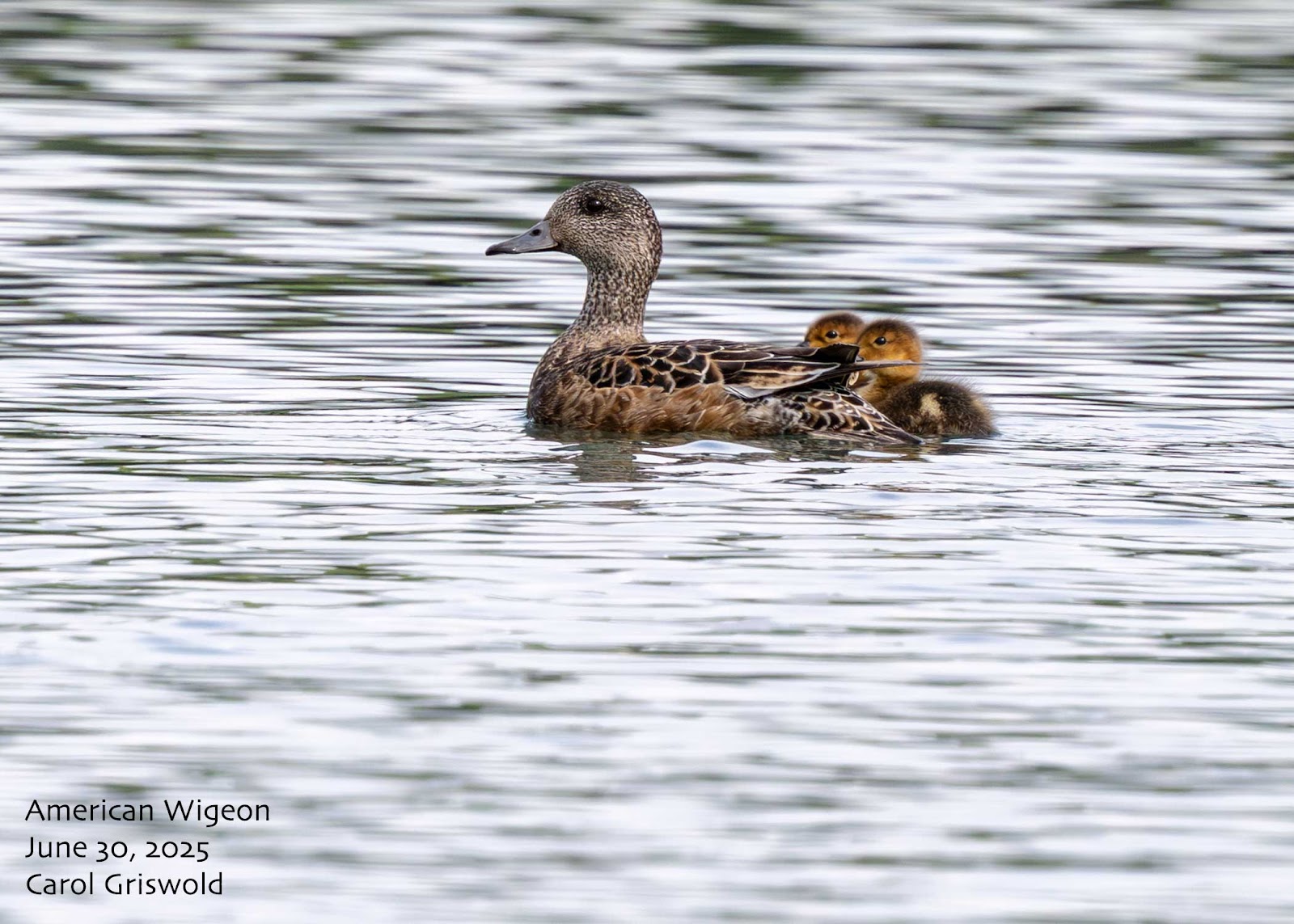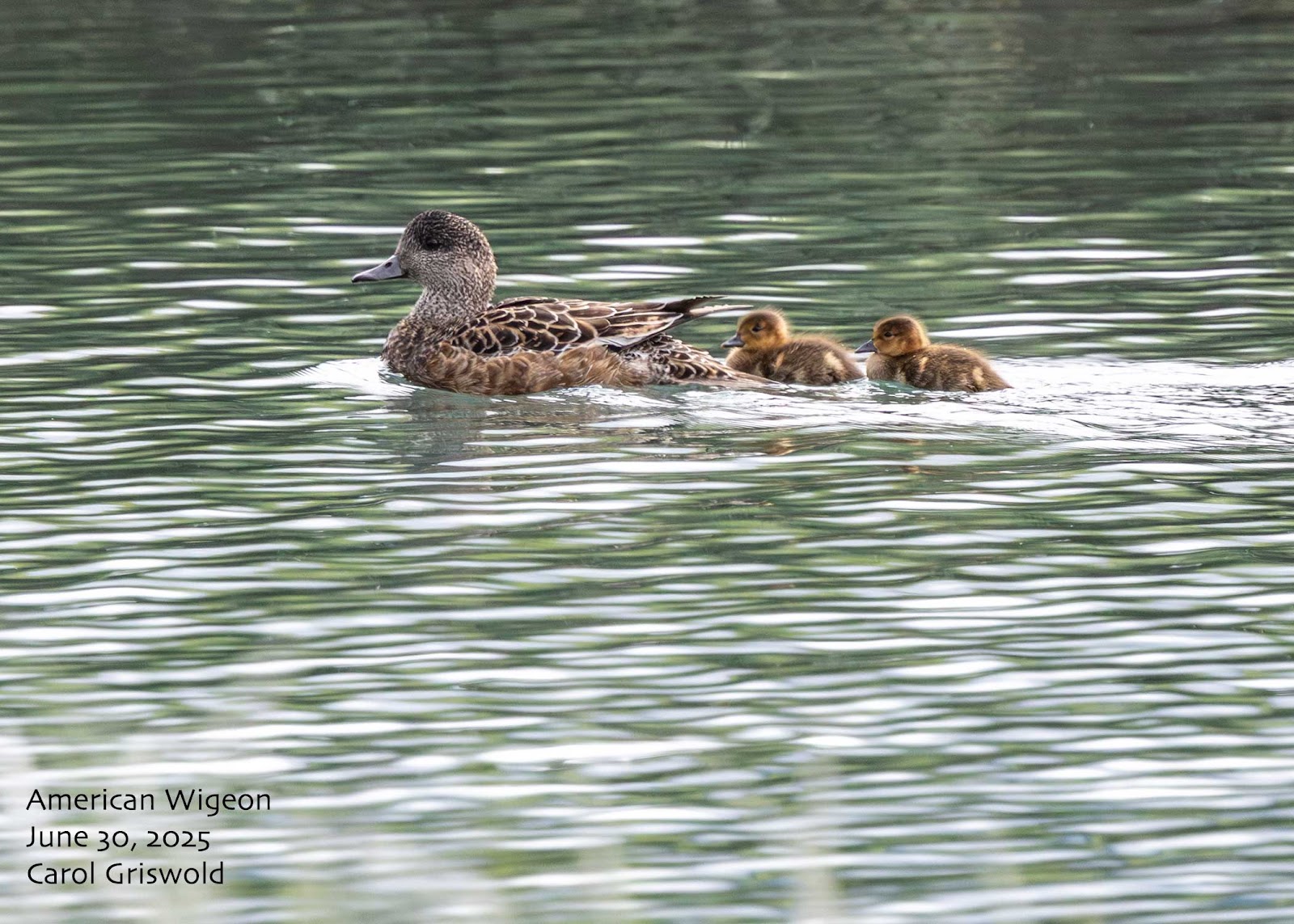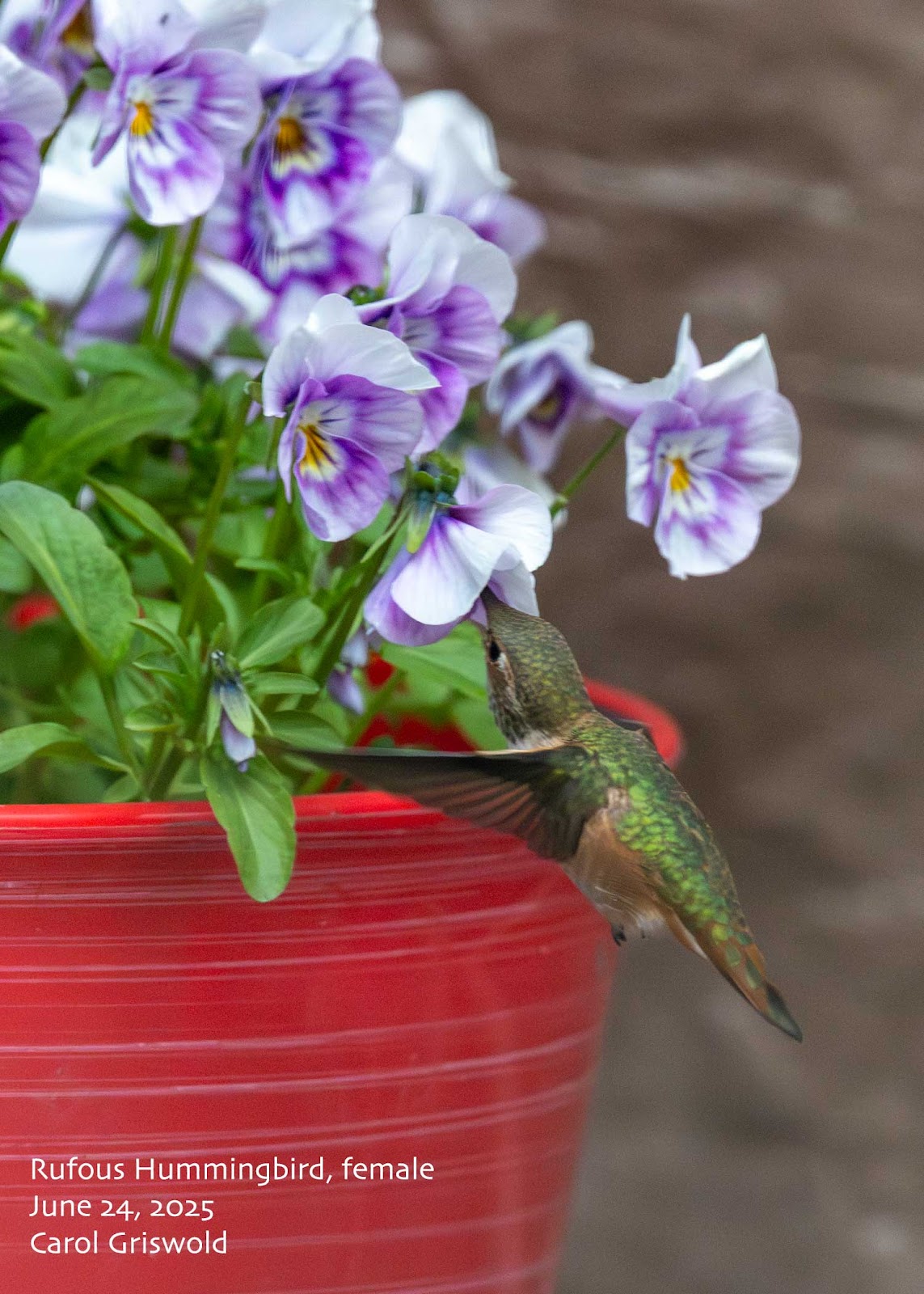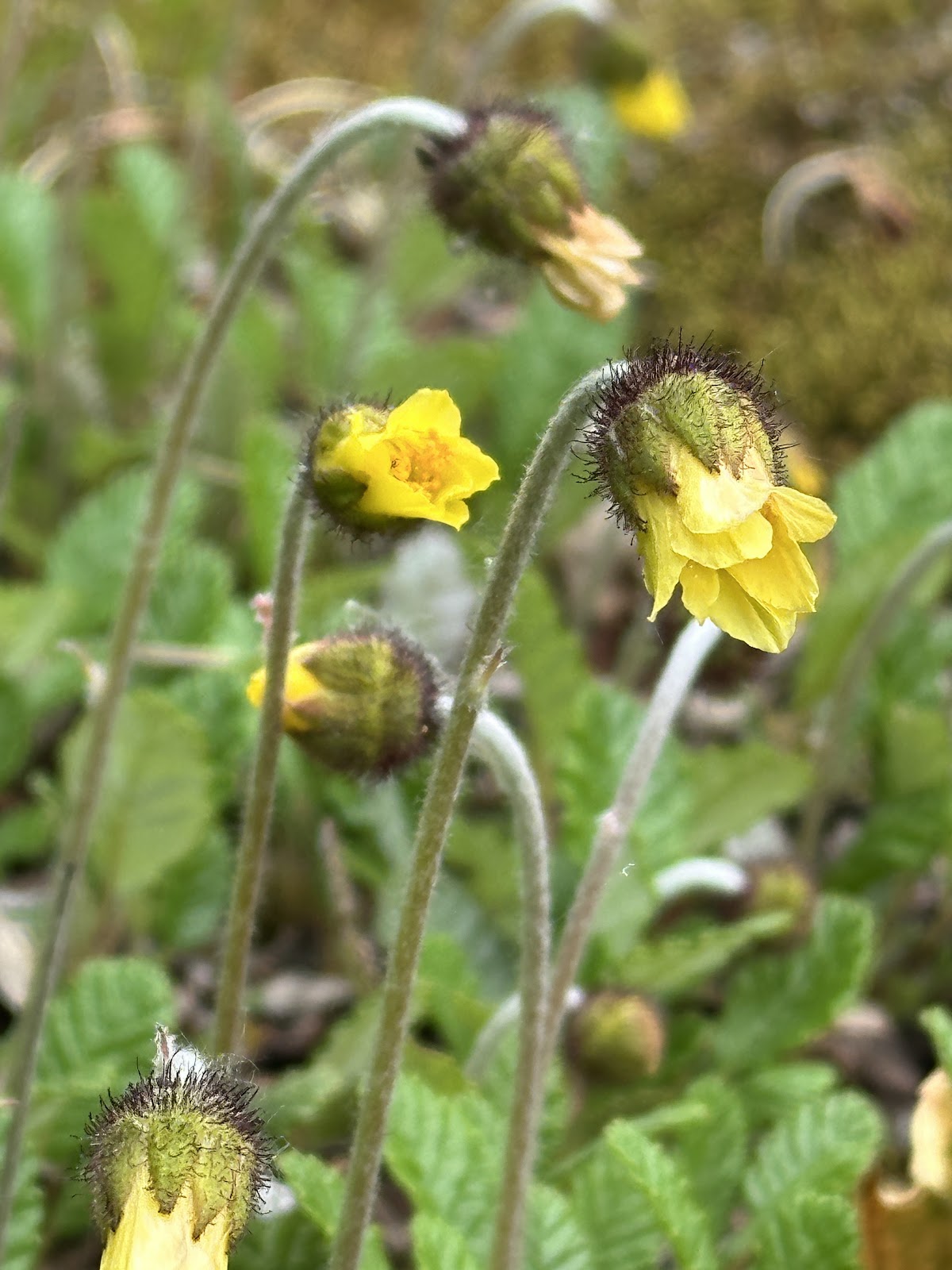Seward, Alaska
Sunrise 5:00 am, sunset 11:08 pm, for a total day length of 18 hours and 8 minutes. Tomorrow will be 3 minutes and 39 seconds shorter.
Cooler and cloudy today with temps ranging from 46 to 53º after two days of sunshine and temps reaching 60º.
Amazing bird day today starting with yard birds in the morning: VIOLET GREEN SWALLOWS swooped overhead with aerial refueling of fluttering babies. I hoped that some were “my” Swallows, fledged from one of my nest boxes.
The Merlin app alerted me to the presence of a TOWNSEND’S WARBLER and ORANGE-CROWNED WARBLER; the FOX SPARROW sang loudly from the side yard, a SONG SPARROW chipped from the raspberries; PINE SISKINS zzzz-ed overhead; RED-BREASTED NUTHATCHES yank-yanked; a STELLER’S JAY threatened predation on CHESTNUT-BACKED CHICKADEE fledglings begging in the spruce.
Add the sweet serenading of the neighborhood ROBIN and HERMIT THRUSH, counterbalanced by squawking RAVEN juveniles.
Missing were the RUFOUS HUMMINGBIRDS that disappeared on Friday, July 11, leaving me forlorn. They sure tanked up prior to migration.
At Fourth of July Creek came a surprise sighting of three BLACK OYSTERCATCHERS intently feeding among the algal-strewn intertidal rocks. One seemed smaller, perhaps a juvenile with its parents. Not one “Wheep!”
Fishing nearby: 3 SURF SCOTERS, 5 MARBLED MURRELETS, 7 HARLEQUIN DUCKS, GLAUCOUS-WINGED GULLS and a few SHORT-BILLED GULLS, KITTIWAKES, a PIGEON GUILLEMOT, a Harbor Seal and a Sea Otter. Another surprise, a BARROW’S GOLDENEYE flyby after being absent all summer.
At the edge of the beach rye grass, a SPOTTED SANDPIPER called anxiously, her babies probably nearby. Ditto, a concealed SAVANNAH SPARROW chipping from the grasses.
I checked the BALD EAGLE nest, but did not happen to see any eaglets or adults. One adult flew past and landed out of sight in the forest, otherwise it was pretty quiet.
Add a few BLACK-BILLED MAGPIES and RAVENS to top off the list.
In the afternoon, I enjoyed an eBike ride along Exit Glacier Road into Kenai Fjords National Park. Brilliant magenta fireweed is already blooming halfway up the spikes; Mt Dryas moved on to producing “Albert Einstein” balls of white, wild seed heads. Cottonwood seed fluff joined the summer “snow” of willow seeds parachuting in the wind; who says plants don’t move?
I heard a SWAINSON’S THRUSH calling softly near the parking lot, another nice surprise. Two Steller Jays noisily flew crumb patrol. BLACK-CAPPED CHICKADEE family groups called and chipped from roadside willows along with a few YELLOW WARBLERS. COMMON REDPOLLS blew raspberries overhead.
In the Chugach National Forest just outside the park boundary, a VARIED THRUSH called tentatively. I watched about a dozen WHITE-WINGED CROSSBILLS call and fly to the top of a nearby spruce. I haven’t seen Crossbills since winter.
I watched another flock of White-winged Crossbills at Two Lakes Park in town. Add to the list a PACIFIC WREN that burst into its long song, and several GOLDEN-CROWNED KINGLETS flitting and twittering through the alders. A RUBY-CROWNED KINGLET also chose to grace the woodlands with its now-scarce exuberant song.
A dark GOLDENEYE grunted plaintively at Second Lake and paddled slowly away. I couldn’t tell if it was a Barrow’s or Common. Like the Goldeneye at Fourth of July Beach, it seems early for them to be back, ready to overwinter.
Lots going on outside; I regret any time spent/wasted indoors!
Happy Birding!
Carol Griswold
Seward Sporadic Bird Report Reporter

